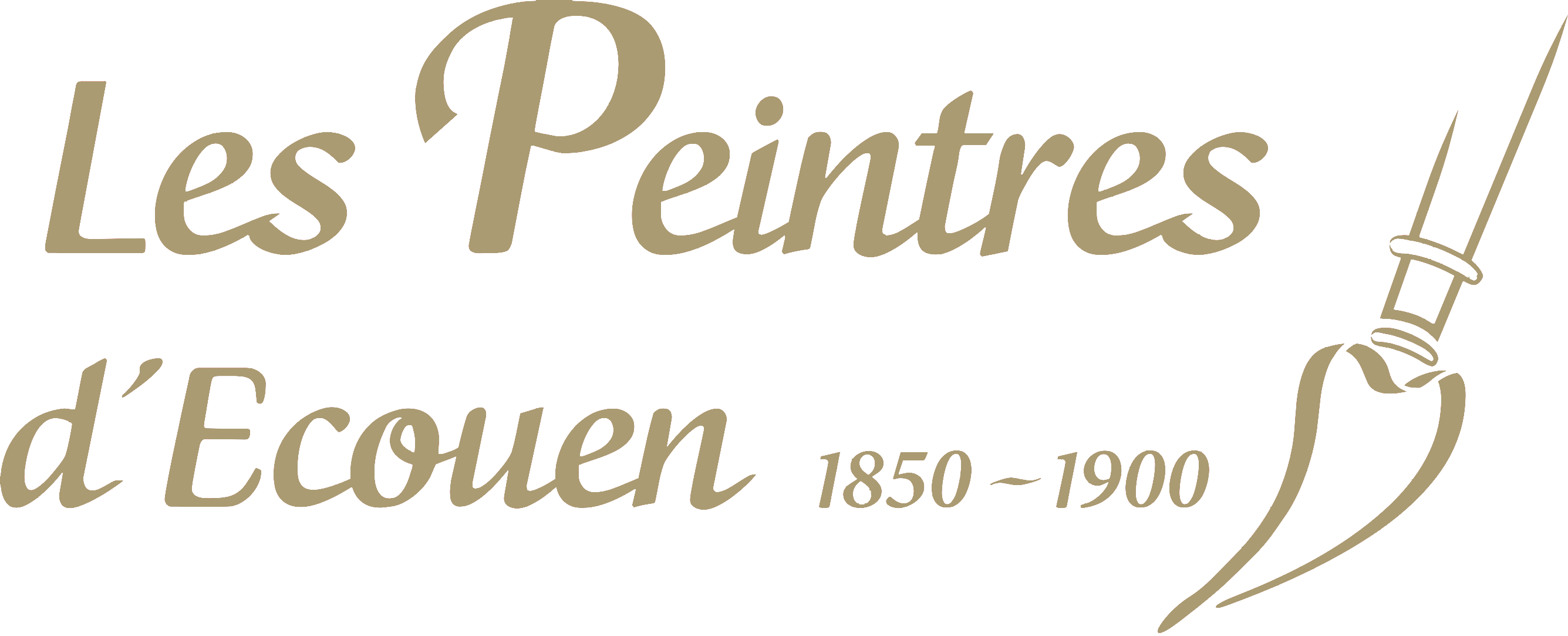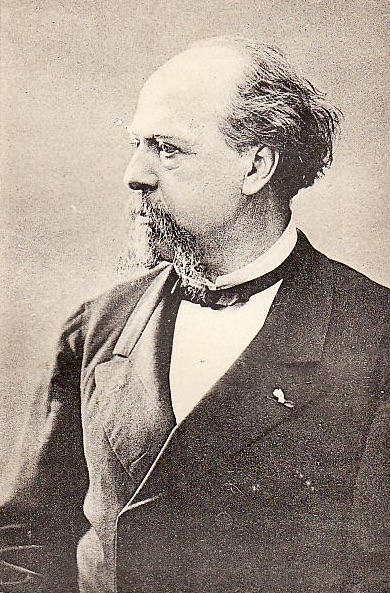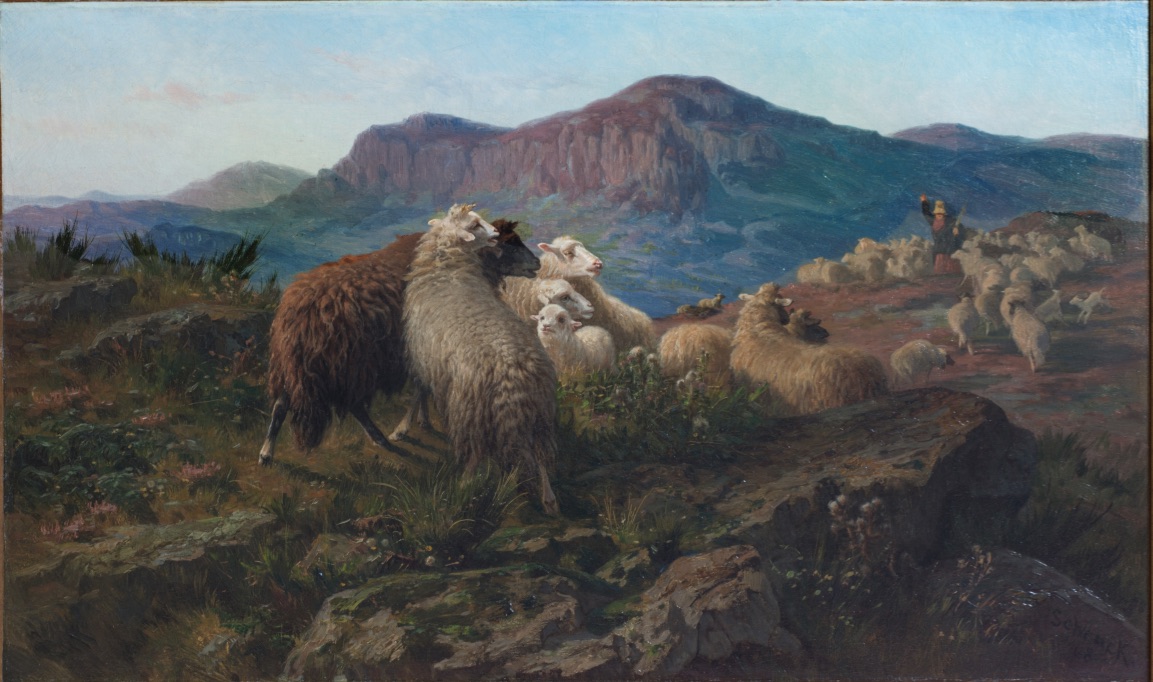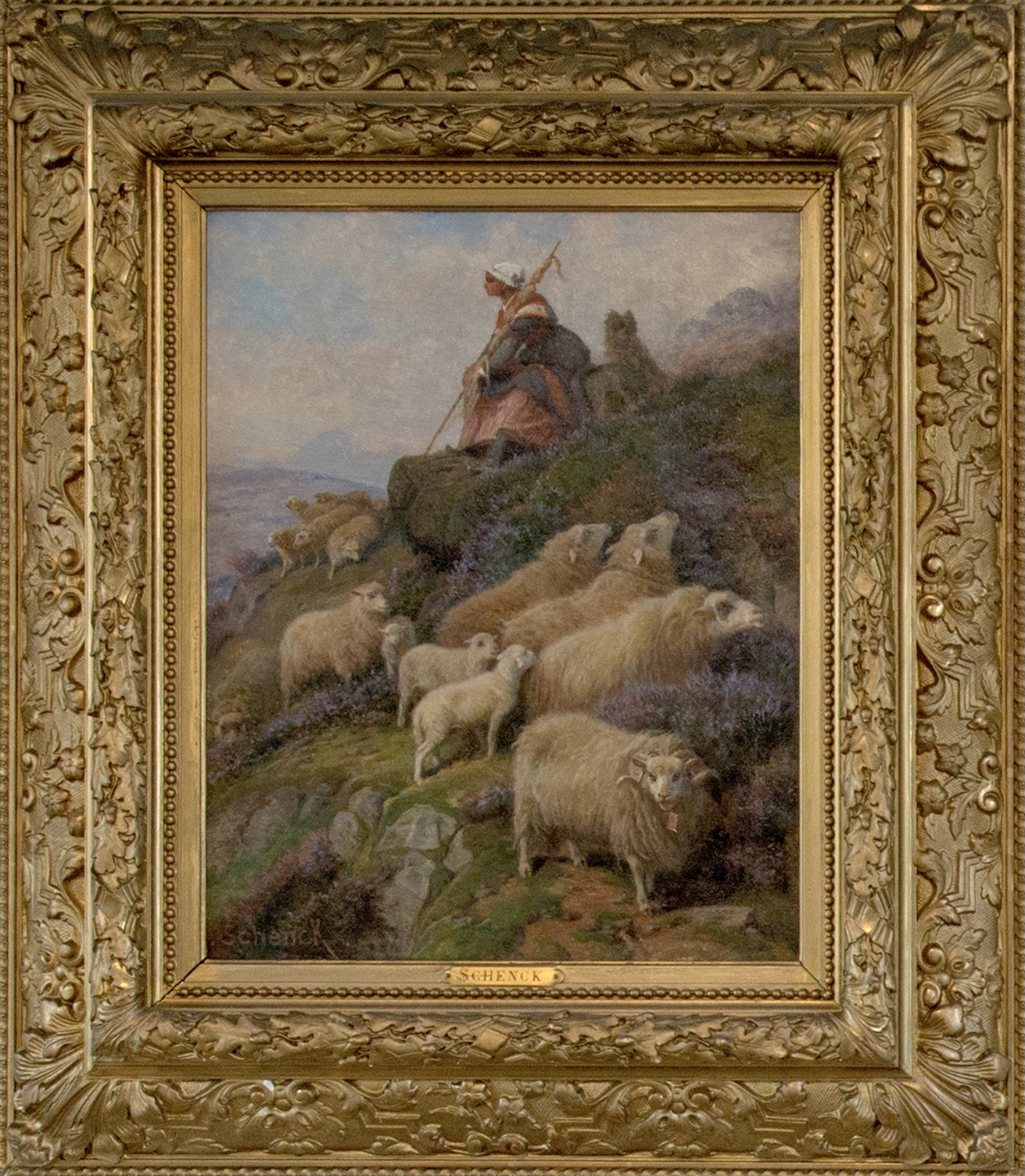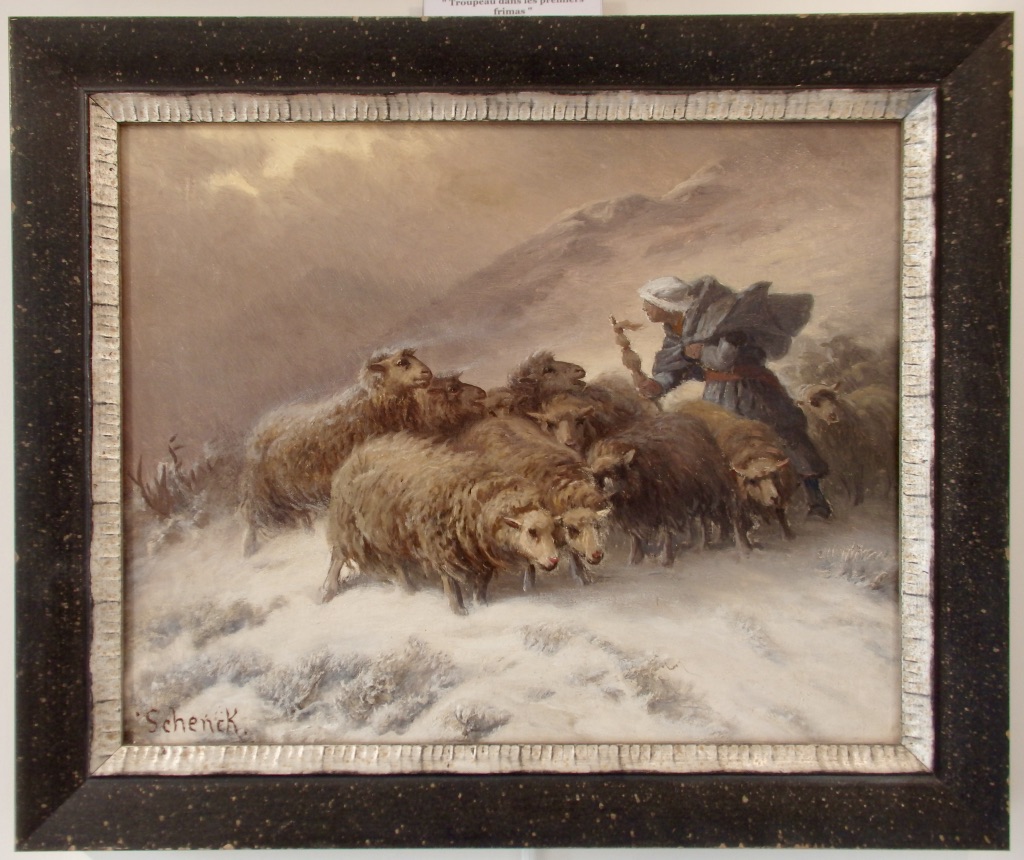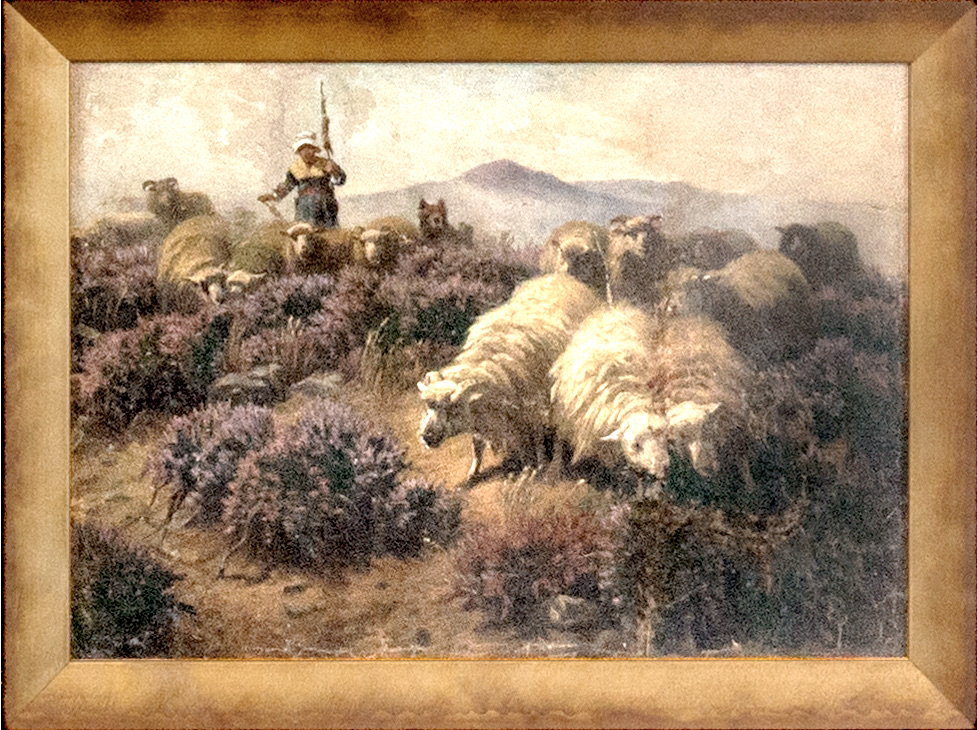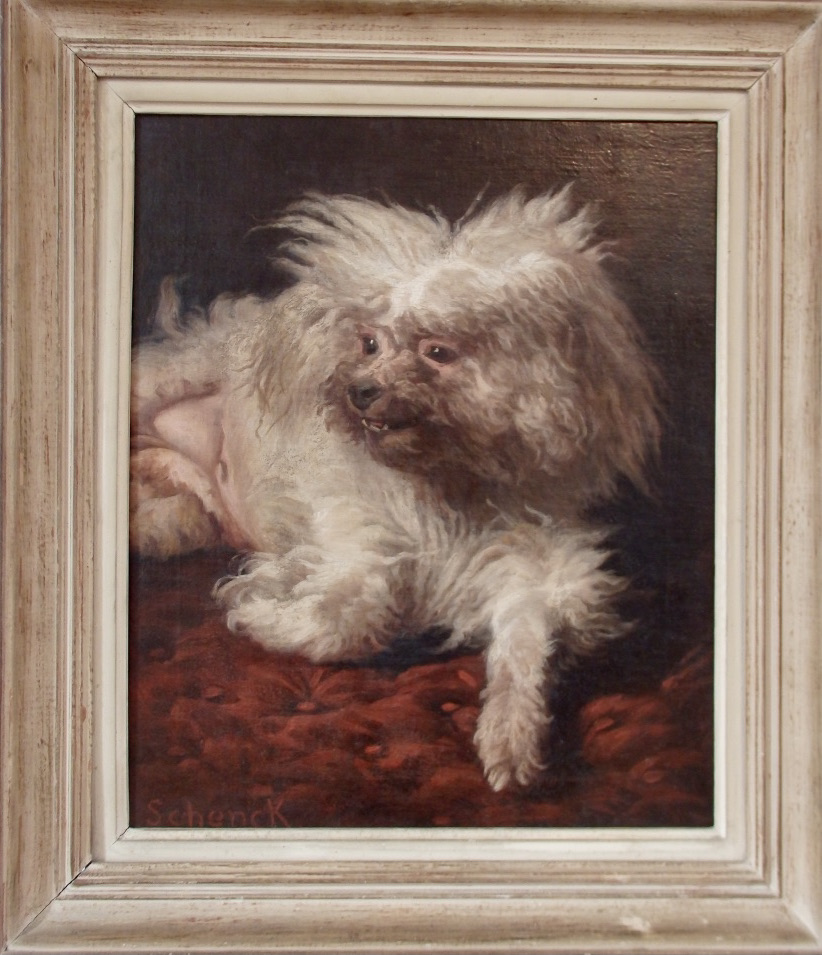Glückstadt, Germany, April 23rd 1821 – December 28th 1900, Ecouen
He was born in Glückstadt, a Danish town later annexed by Prussia, province of Schleswig-Holstein. He is the son of Jakob and Christine Granso. He began his career as a merchant and tried to make his fortune in England and then in Portugal where he stayed for five years, selling wine in Porto. Ruined, he sold his cellars and arrived in France, first in Paris, then in Villiers-le Bel, in 1861, and finally in Ecouen, around 1862. Later, even at the time of his glory, as a painter, he remained a businessman by associating with a man named Jean Théodore Coupier, domiciled in Paris, specializing in the manufacture of dyes for dyeing, derived from coal tar, and this between 1875 and 1882. In Warsaw, on August 23, 1850, he married Louise Emilie Stapaczjuska.
He then devoted himself to painting, as an amateur to begin with, and became a pupil, like many others, of Léon Cogniet, who taught him the realistic reproduction of animals on canvas, which earned him a medal in 1865, and a few compliments from Emile Zola, in his criticisms of the Salon of 1866, who was surprised to see how much the models resembled those depicted on canvas. That year, and exceptionally, it was deer that he represented: « The deer of Mr. Schenck are well drawn, they group themselves very nicely in an ingenious composition. I only wonder if their bodies should not be removed with more vigor on a snowy background. » He is a little more severe with other models: « The herd of the same artist obliges me to repeat the reproaches that I addressed earlier to the German painters. Too much process, a work too agreed and too easy. One has thirteen to the dozen of these sheep ».
His trademark became over time the painting of sheep. It is said, and many have witnessed it, that in his vast property, which has since disappeared, at the top of the rue de la Beauvette, which today bears his name, he raised animals and in particular sheep, models that he had on hand, those that Emile Zola, in person, saw during his visit to Ecouen: « The fence of a stable was pushed in front of us, where Mr. Schenck fed some of his models. It was a tough test for a painter to get close to his work: he had succeeded brilliantly. The spectacle of the stable was the counterpoint of the painting ». Nice compliment from the leader of the naturalist movement. Journalists visit his estate. Louis Enault, wrote in « The Press » of May 28, 1880: « Thus, he knows better than anyone else their usual gaits, their preferred attitudes and the mobile play of their physiognomies ». Long stays in the Auvergne inspired him to paint many pictures of sheep, most often caught in a snowstorm, « the fleeces shivering and lifted, very moving, very pathetic and very true », concludes the same journalist.
For further information, please read the book “L’Ecole d’Ecouen, une colonie de peintres au XIXe siècle” (bilingual French-English).
